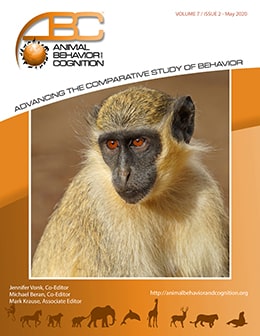Vol 7, Issue 2, May 2020
What Makes a 'Community Informant?' Reliability and Anti-predator Signal Eavesdropping Across Mixed-Species Flocks of Tits
Citation
Carlson, N. V., Healy, S. D., & Templeton, C. N. (2020). What makes a ‘community informant’? Reliability and anti-predator signal eavesdropping across mixed-species flocks of tits. Animal Behavior and Cognition, 7(2), 214-246. doi: https://doi.org/10.26451/abc.07.02.13.2020
Abstract
Mobbing is an anti-predator behavior where multiple species collectively harass a predator while vocalizing. These flocks are made up of species whose vocalizations contain information about predator threat (information sources), and those that eavesdrop on this information (scroungers). To be a community informant (a key information source), a species needs to meet two criteria: (1) the detailed predator threat information they produce must be consistently reliable across mobbing events, and (2) this information must be used by eavesdropping species. As tits (Paridae) have traditionally been assumed to be community informants, we tested whether they meet these criteria. Specifically, we used field experiments with predator mounts to: (1) test the reliability of the encoded information across mobbing events with different community compositions (different species present), and (2) examine the vocal response of previously assumed scrounger species to predators. We found that only blue, great, and coal tits, produced reliable predator threat information regardless of community composition, and each scrounger species acted on the information that tits provided to a different degree. Additionally, we found that both ‘scrounger’ species produced their own information about predators by varying their own mobbing vocalizations in response to the presence of predators. These results suggest that not all species that produce predator threat information are community informants, not all species that appear to eavesdrop on this information do so to the same degree, and some species that initially appear to be scroungers will actually produce their own information about predator encounters.
Keywords
Mixed-species flocks, Mobbing, Community informants, Satellite species, Paridae
